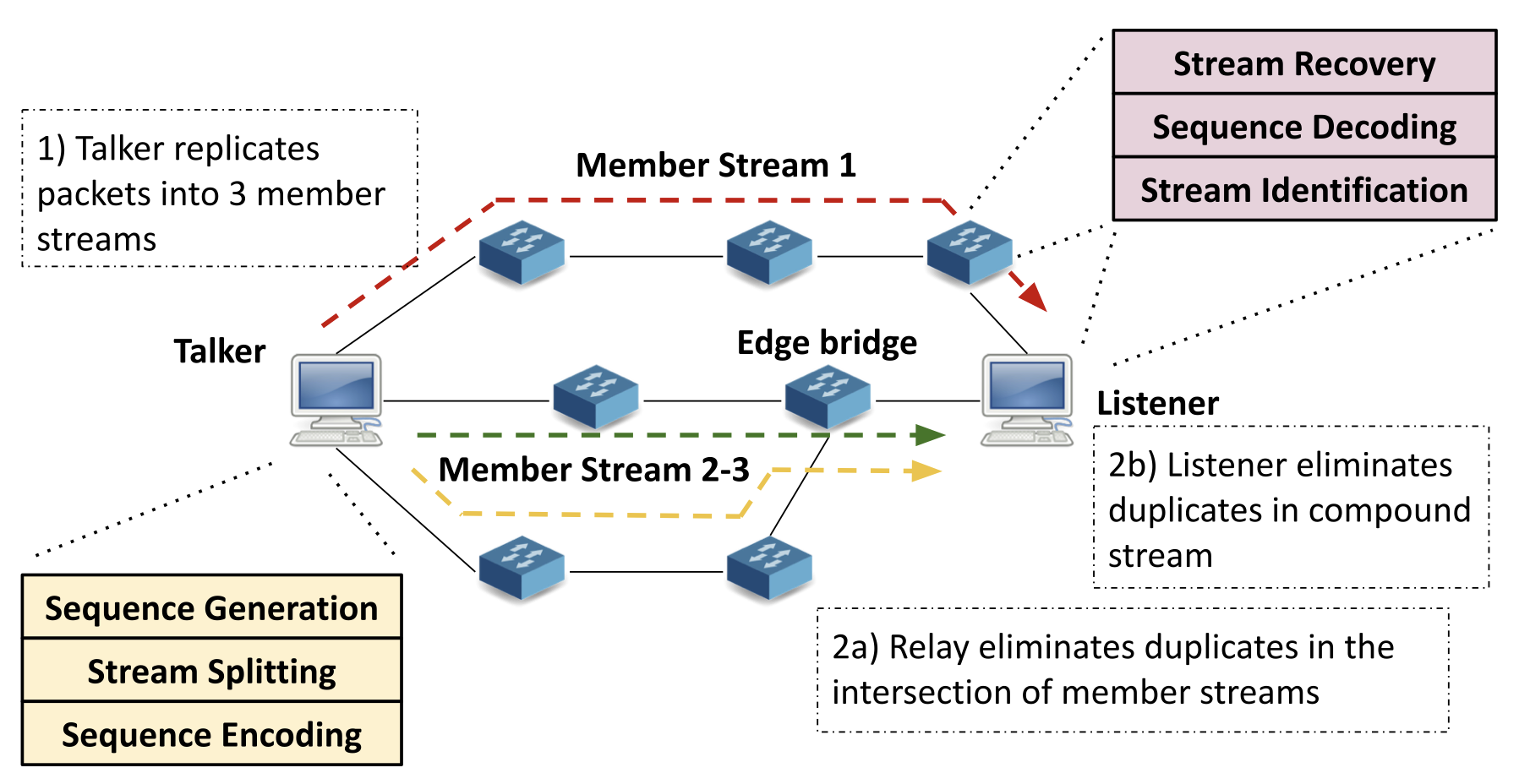News and Announcements

Jakob Ruehlow and Lorenzo Imoehl von Flocken awarded Distinguished Students 2025
December 16, 2025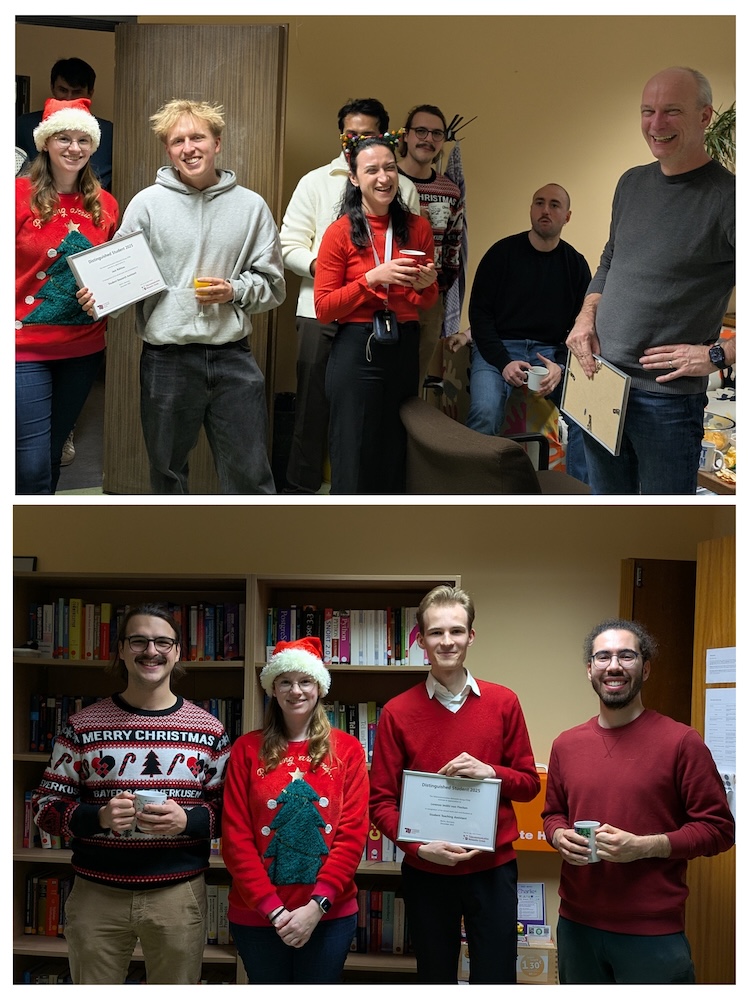
We congratulate Jakob Rühlow and Lorenzo Imöhl von Flocken for receiving this year's Distinguished Student award at TKN! With the the award, we recognize their valued work and contributions as Student Research Assistant and Student Teaching Assistant, respectively.Merry Christmas! TKN Christmas Party
December 16, 2025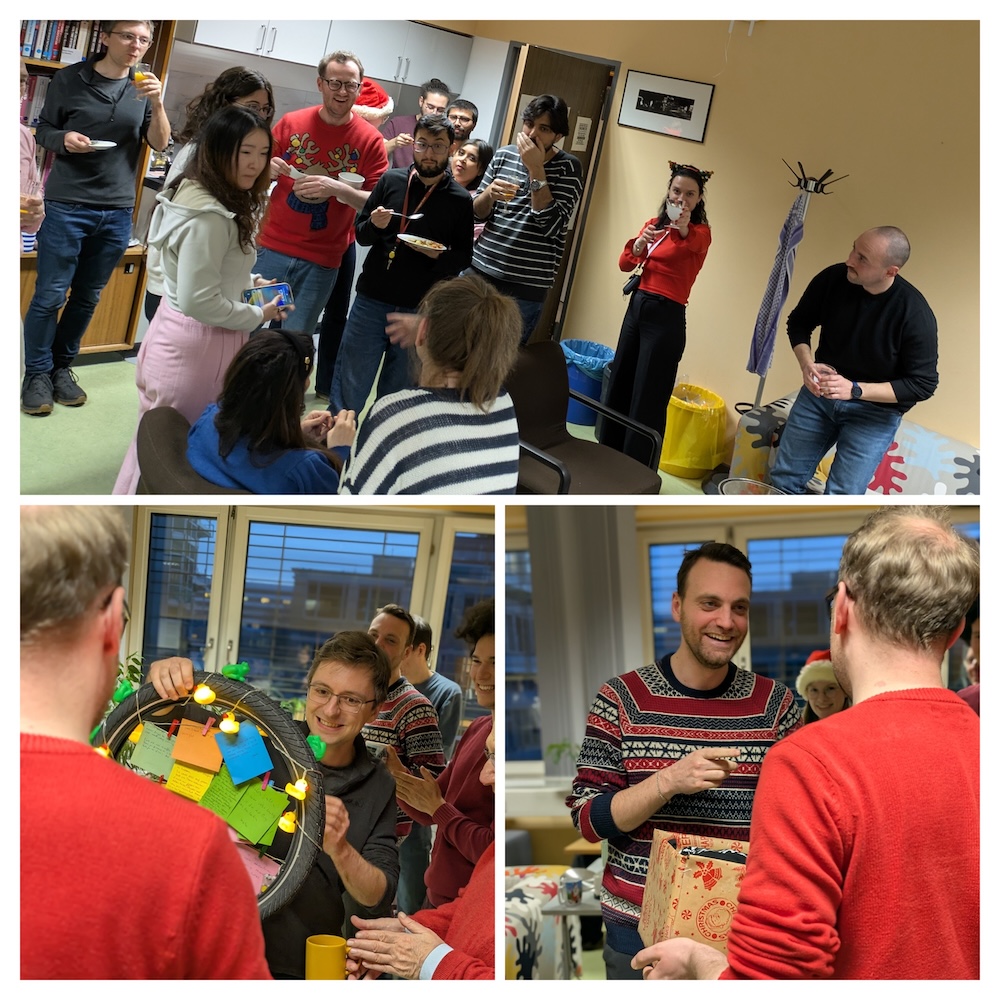
The end of the year is near again. Today at TKN, we celebrated a successful 12 months reading and writing interesting papers, being part of inspiring teaching moments and meeting amazing new colleagues. We enjoyed a relaxed celebration and are grateful for our amazing team. Now, we wish all of our friends, collaborators, and followers a wonderful Christmas time, a good end to the year 2025 and a Happy New Year!Workshop on Resilience in Next-Generation Wireless Communication Networks at IEEE GLOBECOM
December 12, 2025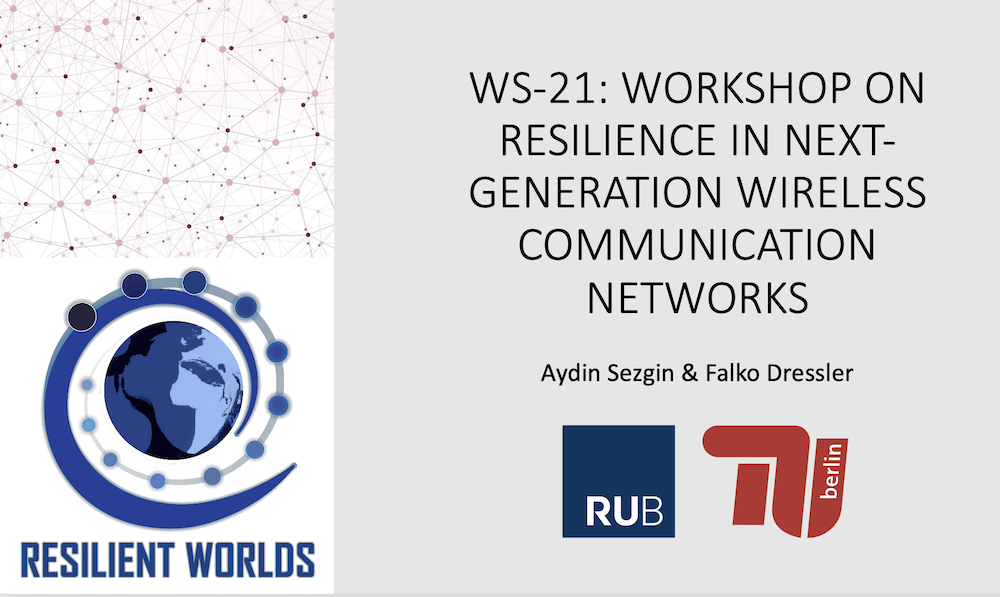
The DFG SPP Resilient Worlds co-organized the Workshop on Resilience in Next-Generation Wireless Communication Networks, held in conjunction with IEEE GLOBECOM 2025 in Taipei, Taiwan. The workshop featured 14 engaging presentations from the authors of accepted papers, complemented by a keynote talk on Next-Generation Vehicular Networks: Resilience, Twins, and Artificial Intelligence.Paper Presentation at IEEE GLOBECOM 2025
December 11, 2025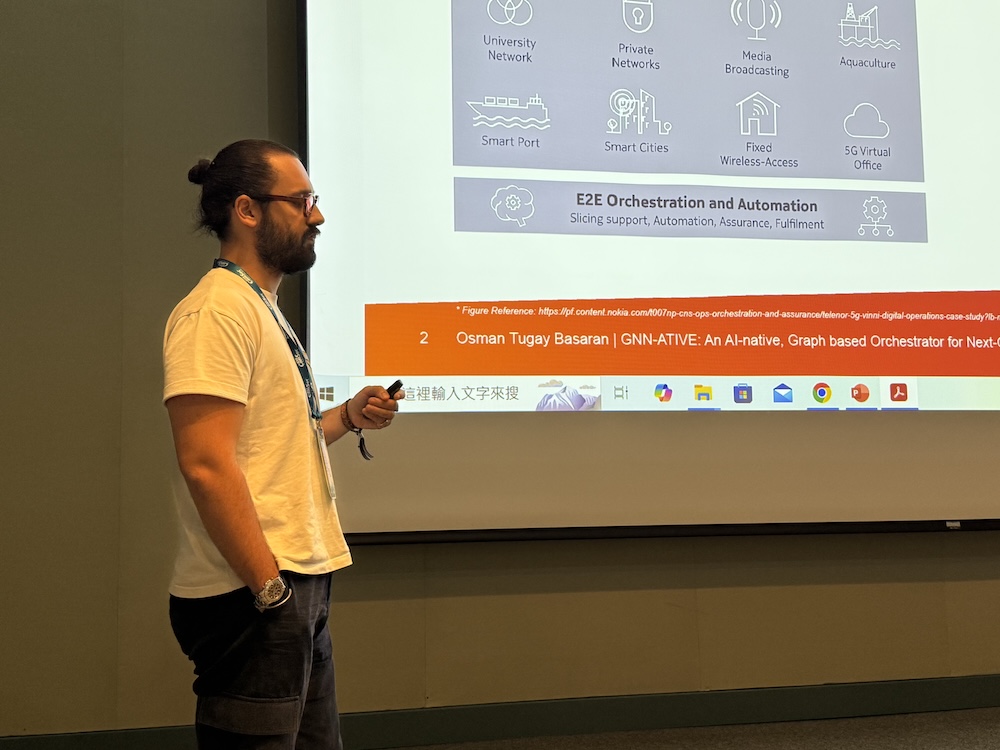
Our team member Osman Tugay Basaran presented our paper GNN-ATIVE: An AI-native, Graph-based Orchestrator for Next-Generation Wireless Networks at the IEEE Global Communications Conference (GLOBECOM 2025), which was held in Taipei, Taiwan. In this work, we introduce GNN-ATIVE, an AI-native orchestration framework that leverages Graph Neural Networks (GNNs) and knowledge graphs (KGs) in a unified graph-based paradigm for network management. GNN-ATIVE uses a semantic knowledge graph to represent the network's state and context, employing standard ontologies to ensure consistency and interoperability.Paper Presentation at NeurIPS 2025
December 06, 2025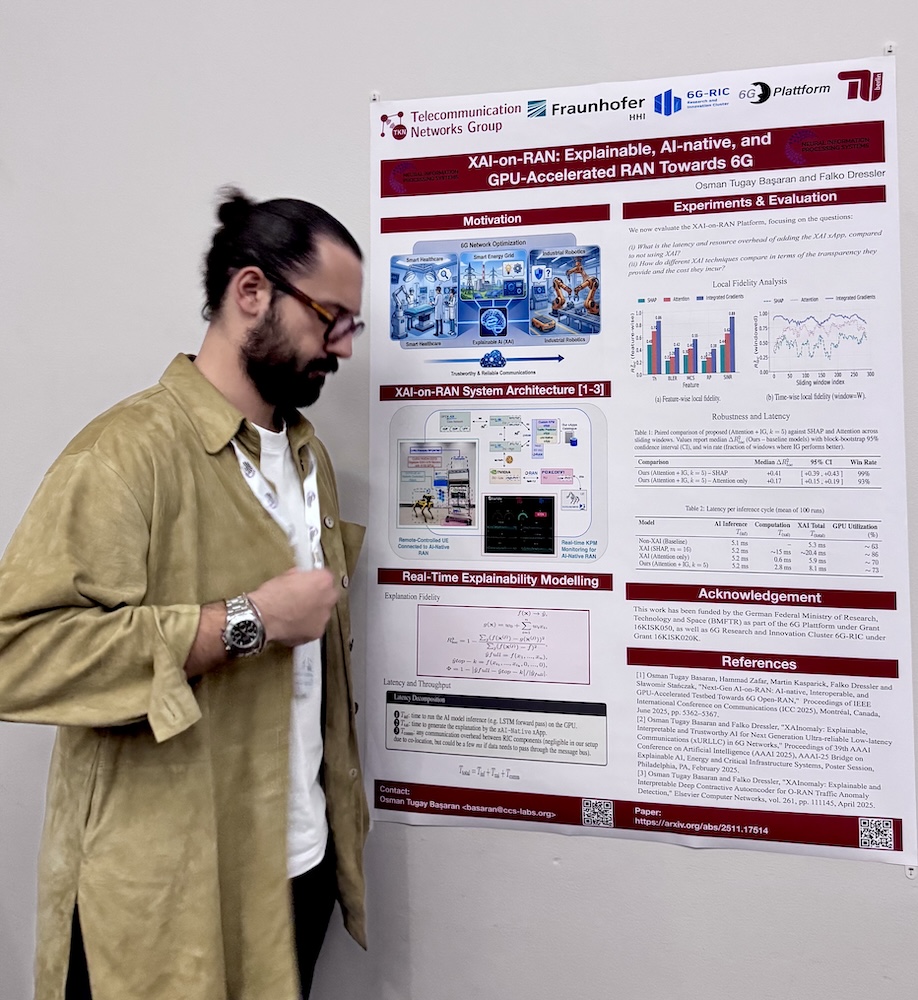
Our team member Osman Tugay Basaran recently had the opportunity to present our paper XAI-on-RAN: Explainable, AI-native, and GPU-Accelerated RAN Towards 6G at the 39th Conference on Neural Information Processing Systems (NeurIPS'25), Workshop on AI and ML for Next-Generation Wireless Communications and Networking (AI4NextG 2025), San Diego, CA, USA. In this work, we present an architecture that brings Explainable AI (XAI) into the radio access network (RAN) control loop, coupled with GPU-acceleration (NVIDIA Aerial-class compute) to achieve low latency, transparent, and adaptive behavior in the AI-native RANs.Julian Heinovski just defended his PhD - congratulations!
December 04, 2025
Julian successfully defended his PhD on December 4, 2025. His dissertation is titled Advancing Cooperative Driving: From Information Freshness to Large-Scale and Personalized Platooning. He was awarded a Dr.-Ing. degree from TU Berlin.
(link to more information)Adam Wolisz elevated to VDE ITG Fellow
November 26, 2025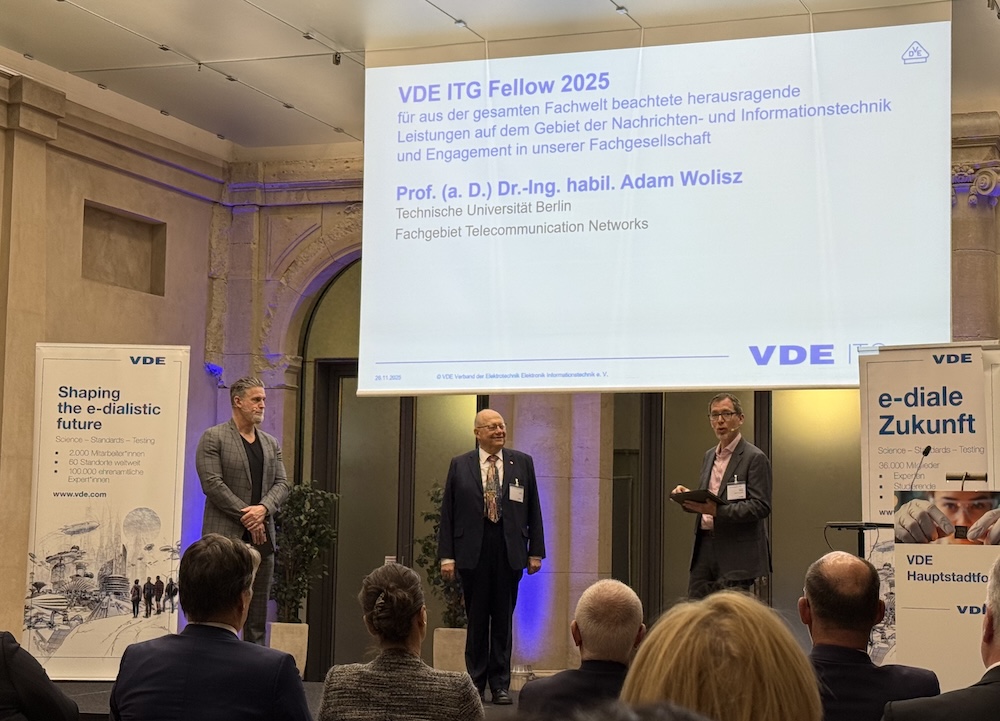
We congratulate Adam Wolisz for being elevated to VDE ITG Fellow.New Elsevier Computer Communications article
November 23, 2025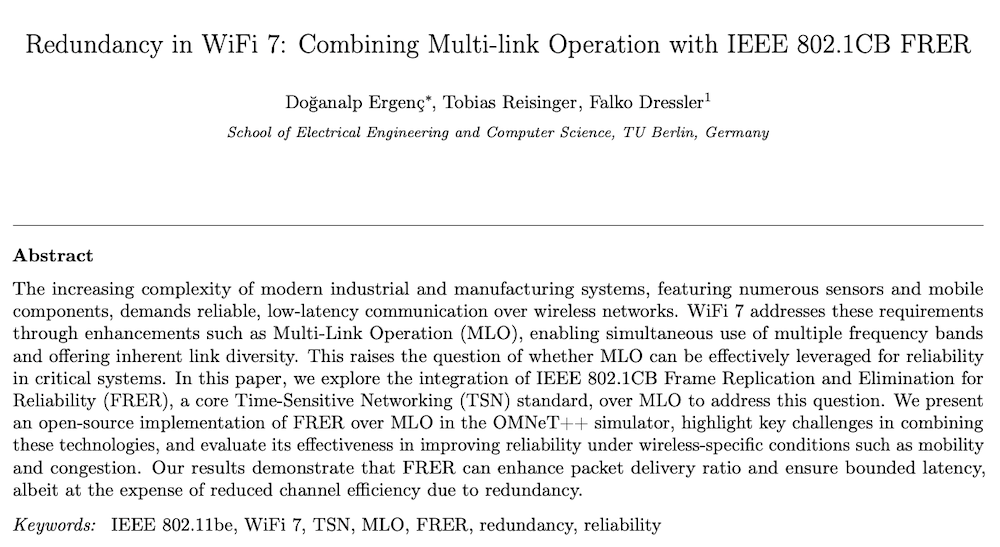
Our article Redundancy in WiFi 7: Combining Multi-link Operation with IEEE 802.1CB FRER has been accepted for publication in Elsevier Computer Communications. The increasing complexity of modern industrial and manufacturing systems, featuring numerous sensors and mobile components, demands reliable, low-latency communication over wireless networks. WiFi 7 addresses these requirements through enhancements such as Multi-Link Operation (MLO), enabling simultaneous use of multiple frequency bands and offering inherent link diversity. This raises the question of whether MLO can be effectively leveraged for reliability in critical systems. In this paper, we explore the integration of IEEE 802.1CB Frame Replication and Elimination for Reliability (FRER), a core Time-Sensitive Networking (TSN) standard, over MLO to address this question. We present an open-source implementation of FRER over MLO in the OMNeT++ simulator, highlight key challenges in combining these technologies, and evaluate its effectiveness in improving reliability under wireless-specific conditions such as mobility and congestion. Our results demonstrate that FRER can enhance packet delivery ratio and ensure bounded latency, albeit at the expense of reduced channel efficiency due to redundancy.
(link to more information)New IEEE Trans. on Neural Networks and Learning Systems article
November 20, 2025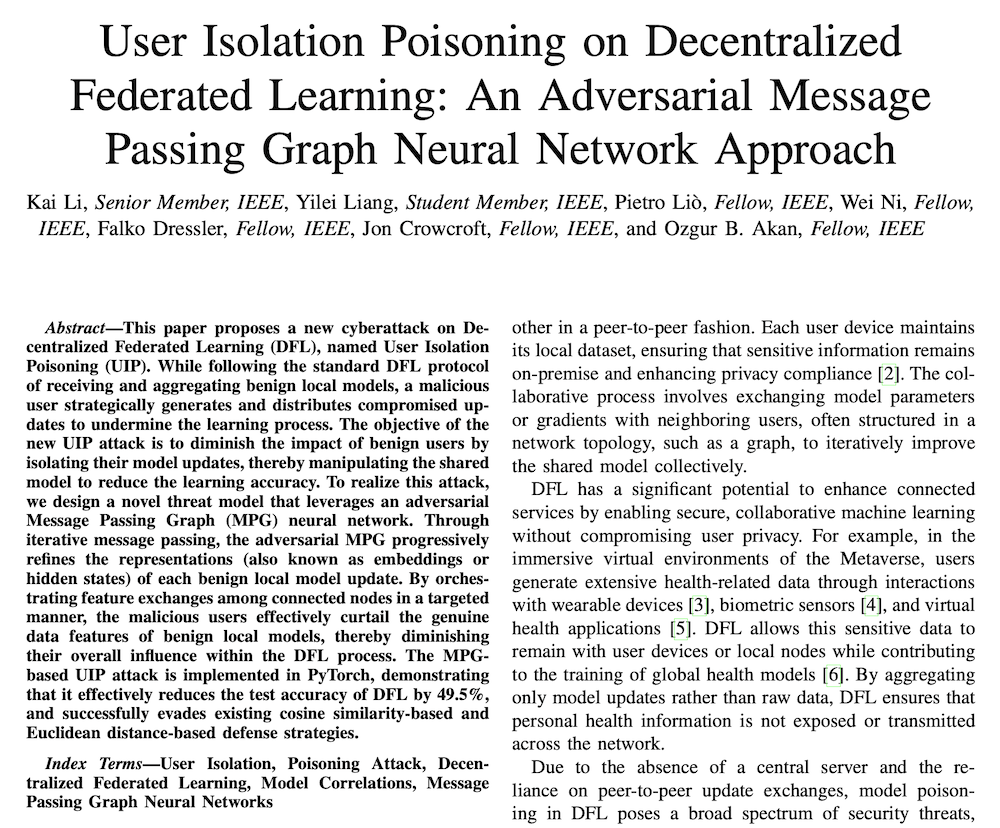
Our article User Isolation Poisoning on Decentralized Federated Learning: An Adversarial Message Passing Graph Neural Network Approach has been accepted for publication in the IEEE Transactions on Neural Networks and Learning Systems.
(link to more information)Paper and Poster Presentation at ACM MobiCom 2025
November 07, 2025
TKN group presented three research contributions at the 31st ACM International Conference on Mobile Computing and Networking (MobiCom 2025), which was held in Hong Kong, China. Joana Angjo and Elena Tonini presented our poster mmWave CSI-based Sensing: a Feasibility Study and Doğanalp Ergenç presented our poster Towards Open Wireless Time-sensitive Networking in Linux. Furthermore, Youming Tao presented the our paper Differentially Private Matroid Bandits for Online Network Topology Optimization at the associated MobiArch workshop.
Load all older news
Last modified: 2024-04-28

